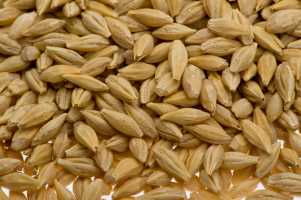 SKC Films Library |
| SKC Films Library >> Agriculture >> Plant Culture >> Field Crops |
| Barley the fourth most important grain crop in the world, after wheat, rice, and corn Barley bears a close resemble to wheat, with a long stem culminating in a spike in which the flowers and, later, the mature seeds are found. The plant grows from 1 to 4 feet high, depending on variety and growing conditions.
Distribution Barley grows under a wide range of conditions. Its culture extends from northern Europe beyond the Arctic Circle to tropical Africa and Asia. It also grows under varying soil conditions and at altitudes ranging from sea level in the region of the Nile Delta in Egypt to the high platueau region in southern China. It does not, however, thrive in regions where temperatures are hot and the climate is humid. Russia is the world's largest producer, followed by Canada, the United States, and France. Other barley-producing nations include China, India, Turkey, Spain, and Japan. In the United States, the leading barley-producing states include North Dakota, Idaho, Minnesota, Washington, and South Dakota. Cultivation In the U.S., Canada, and parts of Europe, barley is sown in the spring. Along the Mediterranean and in parts of California and Arizona, it is sown in the fall. Barley is also grown as a winter annual in many southern U.S. states. Barley is usually planted in rows. The seeding rates vary with the soil and climate conditions for a given area, whether the planting is to be drilled or broadcast, and whether the crop is to be used as a companion crop to other crops such as clovers. It is harvested when the straw is yellow and the kernel is dry enough to snap when bitten. Diseases and Insect Pests Loose smut is a fungus which attacks the head of the plant at blooming time by destroying the flowers and leaving the central stem exposed. Planting seed of resistant varieties, planting clean disease-free seed, or treating the seed with a hot water treatment reduces the incidence of the disease. Covered smut is a fungus that attacks the flower of the plant and replaces the seed with a mass of spores. The spores at threshing time infest healthy grains where the spores may remain alive if not treated. Treating the seed with mercury-dust preparations is a common method of controlling this disease. Scab, which is caused by an organism that also attacks corn and other cereals, causes discoloration or black dots on the kernels. It is controlled primarily through crop rotation and/or seed treatments. Insect pests include the Hessian fly, chinch bug, and grasshoppers. Uses More than 50 percent of the barley grown in the United States is used as animal feed. The grain is either ground or rolled and then mixed with other grains, while young plants can be used for hay or winter pasture. In most parts of the world, however, barley is an important food crop. The grain can be ground into flour, which is then used to make bread, breakfast cereal, etc. High-quality barley can be made into malt by allowing the grain to sprout and then drying it. About 25 percent of the barley grown in the United States is used to make malt, which is used in the making of beer and distilled alcohol products, malt syrup, malted milk, and hot breakfast cereal. Grinding barley in a revolving drum until the hull and germ are removed produces pearled barley, which is used to thicken soups. Nutritional Content serving size 1 cup cooked
pearled barley History Barley may well be the most ancient of cultivated plants. It was grown by the ancient Egyptians, Greeks, Romans, and Chinese. Although believed to be native to Asia and Ethiopia, the exact origins of barley are not known. It was introduced into America by English colonists in the early 1600's. Scientific Classification division Magnoliophyta |
| SKC Films Library >> Agriculture >> Plant Culture >>
Field Crops This page was last updated on 10/30/2017. |

